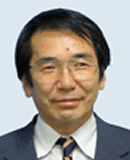Changing corporate strategy and shifting organizational structure
Management research has long suggested that the development of the firm will follow a similar pattern of growth from a small company with a focused product or process to a large enterprise with technologically-related products and/or vertically-integrated processes. Within a single country or across national economies, the original variations in terms of focus and size of companies may have exhibited for societal non-economics reasons, but ultimately the market efficiency and effectiveness of related product portfolio and vertical integration eventually force most enterprises to adapt to the single trajectory of corporate evolution. Originally proposed by Alfred D. Chandler in the 1960s, this “convergence” model based on the experiences of U.S. large industrial enterprises has appealed to management scholars thanks to the continuous hegemony of American economy and its large industrial enterprises that play the major role within it. Ironically, however, as market liberalization progressed in the global economy since the 1980s, two different models of corporate evolution emerged to challenge the efficiency-driven model of firm growth. The first of the two models is the development of business groups with unrelated product portfolio mainly, yet not exclusively, in emerging markets. Management scholars have conventionally discarded this form of business enterprises as an inherently-inefficient organization that can survive only in the immature economic environment of emerging markets. As some of those economies have got to belong to the high-income OECD group such as South Korea, however, the nation’s flagship firms lime Samsung and LG still hold on to their original business group form. The second development that has contested the supremacy of the Chandlerian evolutionary model has come from the large enterprises that extensively adopted a network-type organizational structure. Rather than relying on intra-firm operations, enterprises today actively utilize extra-firm resources such as open innovation for R&D, OEM for production and strategic alliances for operational coordination. Through these reform measures today’s corporations aim to maximize strategic effectiveness and operational efficiency. This presentation aims to give a systematic review of the ongoing changes of corporate strategy and organizational structure and their economic reasoning and managerial implications.
Lecture at NEMO2015
Date/Time: Friday, July 24, 2015 at 11:00

